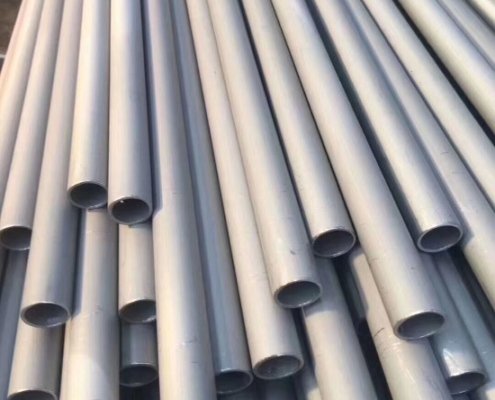What are the mechanical properties of INCONEL 625?
As the flagship nickel alloy in our impressive range of materials on offer, the INCONEL 625 alloy is a marvel in the INCONEL alloy range. Its many positive properties mean that it has many different industrial applications, making it a particularly versatile alloy.
This high-performance material is often praised for its excellent corrosion resistance, even in the harshest environments and at the highest temperatures. But this is not its only characteristic; this alloy has been carefully crafted to provide a wealth of physical and mechanical properties that help solve common design engineering problems.
Over the years, the Inconel 625 alloy has been developed to further enhance these properties. Since the 1960s, when it was first introduced as a material for steam pipes, it has been refined to improve its creep resistance and weldability, thus increasing its number of industrial applications.

Defining mechanical properties of INCONEL 625
1. There are many factors to consider in the selection of materials. It is important to assess the physical and mechanical properties of an alloy to see how these properties match the intended end use.
Physical properties are measurable characteristics, such as the electrical conductivity or melting point of an alloy. These properties are a fact of the alloy’s composition and are useful points to consider.
However, the mechanical properties of an alloy are more useful for design engineers to compare the properties of different metal alloys to meet their requirements. Mechanical properties are an indication of how a material will perform under different forces. These include strength (tensile, fracture, fatigue, etc.), ductility, and wear resistance.
Mechanical properties can be affected by the way an alloy is processed, which is why some nickel alloys are hot or cold-worked to obtain the right balance of mechanical properties. Balance is necessary when selecting a material – some materials perform well under certain conditions and in certain properties, but are weaker in others. It is therefore important to choose the right alloy for the right strength and range of application.
Key mechanical properties of INCONEL 625 CrNiFe alloy
2. Although numerous tests have been carried out on nickel alloys to determine their mechanical properties, one of the most important is the tensile strength test. This property is related to the amount of load that the metal can withstand before fracture. The metal passes through a number of important strength points before it finally fractures. The material will first begin to deform and stretch until it reaches the point where it retains that deformation (as opposed to returning to its original shape). This is the yield strength. When the material reaches the load at which it will eventually break, this is the tensile strength. The more a material can resist permanent deformation in shape, the harder it is called an alloy.
INCONEL 625 has a high level of strength and hardness. By cold-working the alloy, it is possible to increase the tensile strength of the material at intermediate-temperature operating conditions. When exposed to intermediate temperatures, some hardening occurs within the alloy.
Another key test carried out on alloys is to determine their strength, i.e. to observe their fatigue strength. This is how much repetitive stress a metal can withstand, although it depends very much on the level of stress the metal is subjected to, and the frequency and duration of the applied stress. INCONEL 625 exhibits good fatigue strength at room temperature, as well as solid-state properties at high temperatures – which vary depending on whether the metal has been solution treated or annealed.
As an example of its exceptional fatigue strength, the endurance limit for INCONEL 625 alloy was found to be 90,000 psi for smooth bars in 108 cycles at room temperature using cold-rolled annealed plates in full reverse bending. the toughness of a material is usually measured by impact testing to see how well an alloy can absorb an impact without breaking. This is usually done over a range of temperatures. Ductility is also tested to see how much a material can stretch without breaking and how much it retains its new shape after the force is removed. Both toughness and ductility are compromised at very low temperatures when the material is more prone to cracking. However, INCONEL 625 alloy retains its excellent toughness and ductility at temperatures as low as -320 °F.
3. To give INCONEL 625 alloy the best mechanical properties, it is usually hot-worked, cold-worked, or annealed at temperatures below 1200°F. For hotter temperatures, it has the best properties when annealed or solution treated. Typically, if parts with optimum creep or fracture resistance are required, the material is usually solution treated.
It does need to be machined by hand by experts to maintain these impressive mechanical properties. As this material has been developed to be very strong at high temperatures, care must be taken when hot working it. It can easily be manufactured by thermoforming, but it requires very powerful equipment to do so. However, the material can be cold formed by standard processes, which has a beneficial effect on the mechanical properties of the alloy, for example, by increasing the tensile strength as described above.


